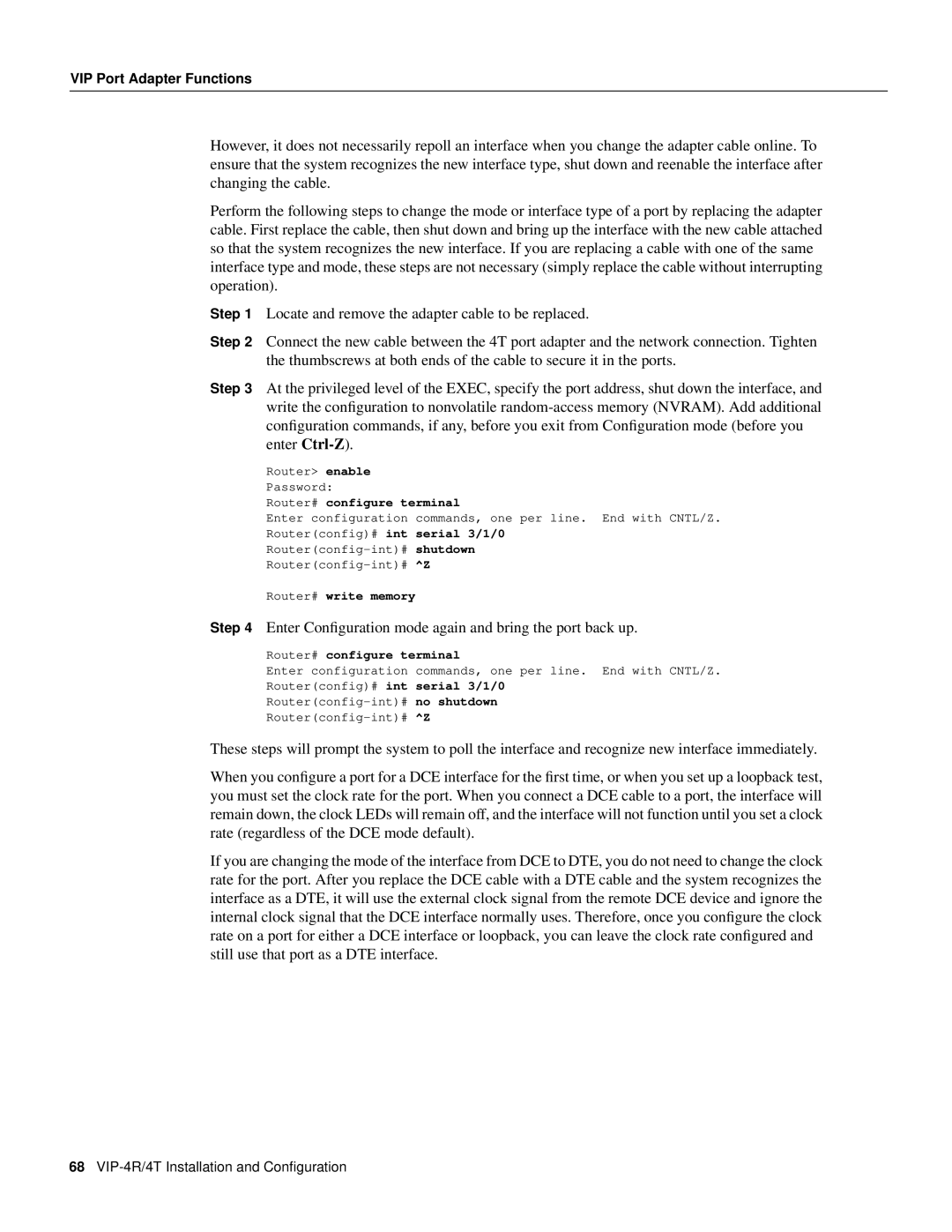VIP Port Adapter Functions
However, it does not necessarily repoll an interface when you change the adapter cable online. To ensure that the system recognizes the new interface type, shut down and reenable the interface after changing the cable.
Perform the following steps to change the mode or interface type of a port by replacing the adapter cable. First replace the cable, then shut down and bring up the interface with the new cable attached so that the system recognizes the new interface. If you are replacing a cable with one of the same interface type and mode, these steps are not necessary (simply replace the cable without interrupting operation).
Step 1 Locate and remove the adapter cable to be replaced.
Step 2 Connect the new cable between the 4T port adapter and the network connection. Tighten the thumbscrews at both ends of the cable to secure it in the ports.
Step 3 At the privileged level of the EXEC, specify the port address, shut down the interface, and write the configuration to nonvolatile
Router> enable
Password:
Router# configure terminal
Enter configuration | commands, one per line. End with CNTL/Z. |
Router(config)# int | serial 3/1/0 |
shutdown | |
^Z |
Router# write memory
Step 4 Enter Configuration mode again and bring the port back up.
Router# configure terminal
Enter configuration | commands, one per line. End with CNTL/Z. |
Router(config)# int | serial 3/1/0 |
no shutdown | |
^Z |
These steps will prompt the system to poll the interface and recognize new interface immediately.
When you configure a port for a DCE interface for the first time, or when you set up a loopback test, you must set the clock rate for the port. When you connect a DCE cable to a port, the interface will remain down, the clock LEDs will remain off, and the interface will not function until you set a clock rate (regardless of the DCE mode default).
If you are changing the mode of the interface from DCE to DTE, you do not need to change the clock rate for the port. After you replace the DCE cable with a DTE cable and the system recognizes the interface as a DTE, it will use the external clock signal from the remote DCE device and ignore the internal clock signal that the DCE interface normally uses. Therefore, once you configure the clock rate on a port for either a DCE interface or loopback, you can leave the clock rate configured and still use that port as a DTE interface.
68
